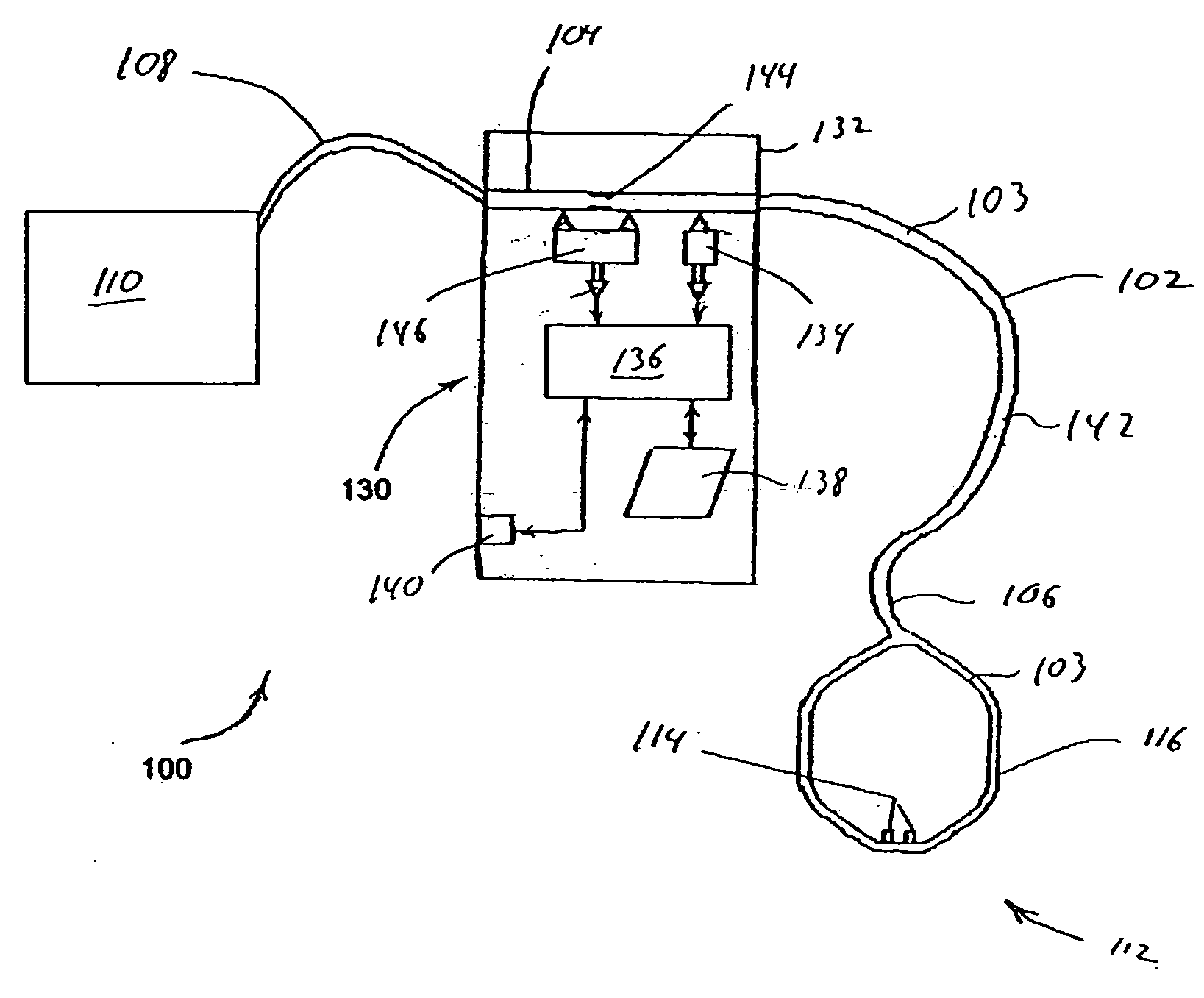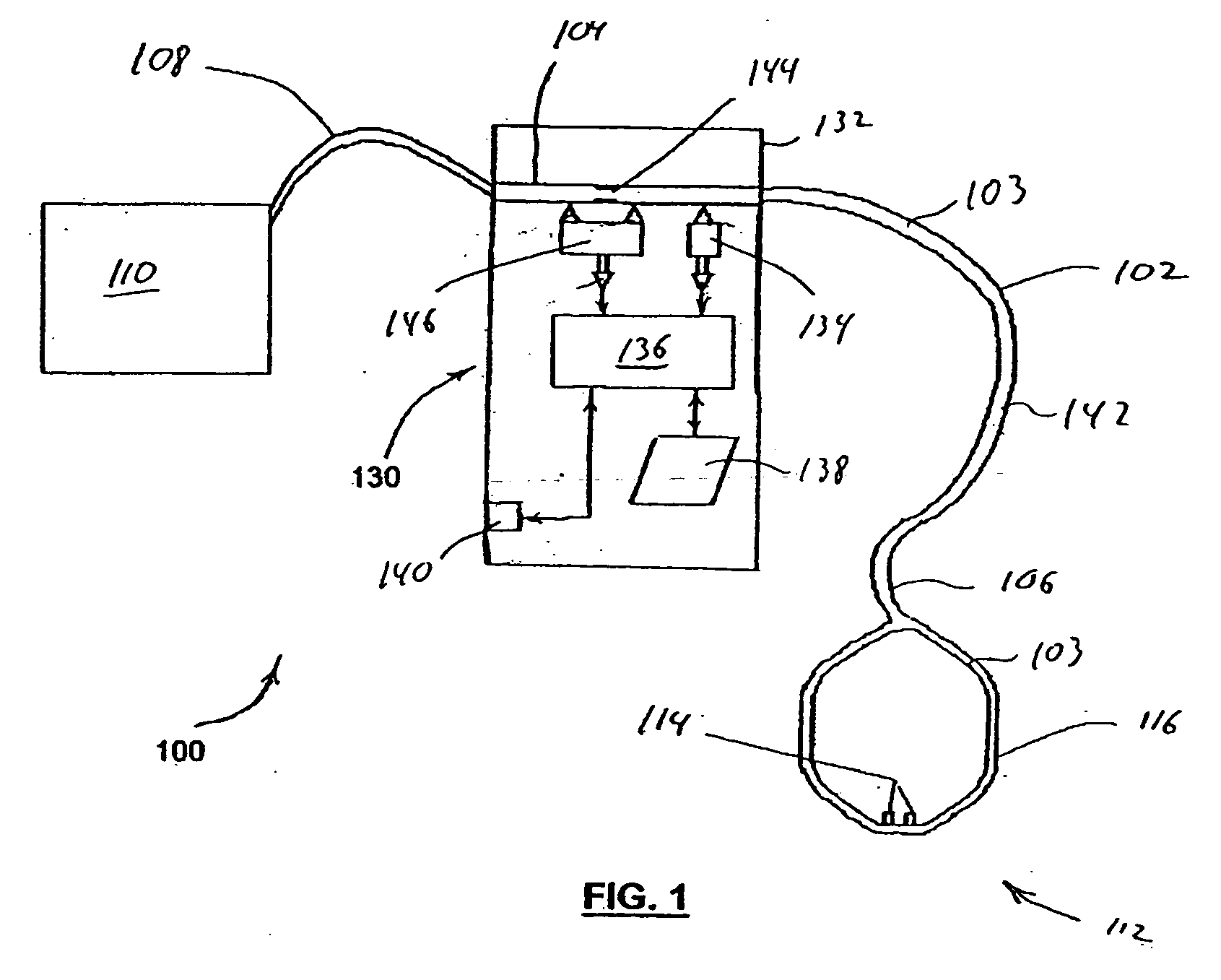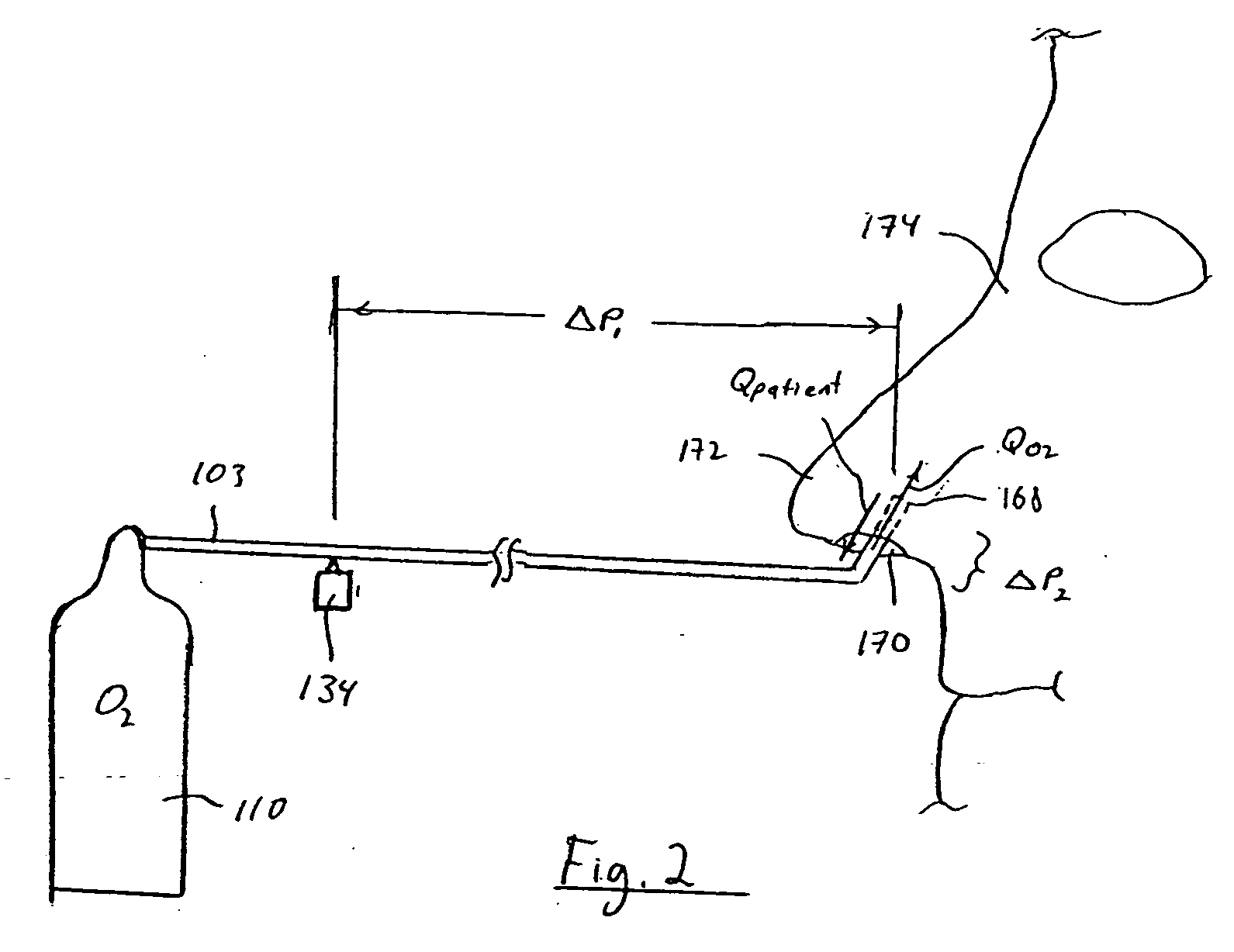Respiratory monitoring during gas delivery
- Summary
- Abstract
- Description
- Claims
- Application Information
AI Technical Summary
Benefits of technology
Problems solved by technology
Method used
Image
Examples
second embodiment
[0061] a respiratory monitoring system 100′ is shown in FIG. 7. In this embodiment, patient interface device 112′ is a face mask 148 coupled to distal end 106 of conduit 102. Additionally, a patient circuit 150 is connected to patient interface device 112′ (face mask 148) to carry a flow of gas from a ventilator or pressure support system 152 to the patient's airway in addition to the gas flow provided by conduit 102.
[0062] Facemask 148, when connected via patient circuit 150 allows the administration of continuous positive airway pressure (CPAP), bi-level positive airway pressure, auto-titrating pressure support, PAPP, PAV, ventilator, or any other conventional pressure support therapy. Patient circuit 150 may consist of a single lumen breathing tube with an exhalation port or valve provided on or near the mask, or two breathing tubes, with one tube used to apply inspiratory flow and the other tube to allow for expiratory flow from the patient. It should be readily apparent to one ...
third embodiment
[0067] It can be appreciated that the flow or pressure of gas in second lumen 308, e.g., the output of pressure sensor 134′, will include a pressure drop ΔPO2 due to the flow of supplemental gas being delivered to the patient. For this reason, this third embodiment of the present invention, like the previous embodiments, contemplates removing or compensating for the pressure drop is generated due to the administration of the supplemental flow of gas ΔPO2. The techniques discussed above for accomplishing this function are, therefore, applicable to this embodiment.
[0068] It should also be noted that the proximal end of second lumen 308 can be connected to a flow sensor. That is, pressure sensor 134′ can be replaced with a flow sensor, and the proximal end of the second lumen can be open to atmosphere so that a flow is created in the second lumen due to the bias flow of gas. During patient respiration, gas flows into and out of prongs 311a and 311b cyclically. This flow of gas is illus...
sixth embodiment
[0077]FIG. 13 is a schematic diagram of a monitoring and therapy delivery system 400 according to the principles of the present invention. This embodiment is also similar to that of FIG. 1 except that an exhaust conduit 402 is provided from conduit 102 to ambient atmosphere. A flow sensor 404 is provided to measure the flow of gas passing through exhaust conduit 402. The flow of gas QTotal measured by flow sensor 404 will include (1) a flow of gas QO2 due to the continuous flow of oxygen being introduced into conduit 102, and (2) a flow of gas QBreathing due to patient breathing. Thus, flow sensor 404 provides a flow measurement comparable to the flow measurement made by flow sensor(s) in the previous embodiments.
PUM
 Login to View More
Login to View More Abstract
Description
Claims
Application Information
 Login to View More
Login to View More - R&D
- Intellectual Property
- Life Sciences
- Materials
- Tech Scout
- Unparalleled Data Quality
- Higher Quality Content
- 60% Fewer Hallucinations
Browse by: Latest US Patents, China's latest patents, Technical Efficacy Thesaurus, Application Domain, Technology Topic, Popular Technical Reports.
© 2025 PatSnap. All rights reserved.Legal|Privacy policy|Modern Slavery Act Transparency Statement|Sitemap|About US| Contact US: help@patsnap.com



